13 Times Character Deaths Pissed People off Rather than Adding Gravitas
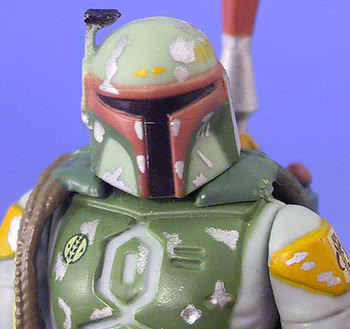 |
Whether you’re talking about movies, TV shows, comics or books, every story needs stakes, and plenty of narrative devices are used to raise them. Perhaps the most oft employed device – the looming specter of death for our main characters – is also the most oft abused. The departure of Boromir in The Fellowship of the Ring is one of the most affecting deaths in film history, while Ned Stark’s death toward the end of A Game of Thrones served to remind readers (and HBO viewers) that George R.R. Martin is not messing around.
For every brilliantly executed death, however, we’re inundated with plenty of misses. Sometimes, these are crude and diverting, but for our purposes here, we’ll count down 13 times character deaths actually lessened the narrative heft of a story and served to piss off its loyal audience rather than adding depth and emotion to the proceedings. [Spoilers for a bunch of (mostly) older things abound, most notably Game of Thrones and The Hunger Games, book versions.]
13. Johnny Cage (Mortal Kombat: Annihilation)
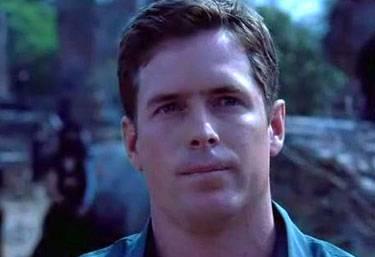 |
Is 1995’s Mortal Kombat a good movie? Absolutely not. Is it still one of the best video game adaptations of all time? Absolutely yes, which tells us something about that.
What Paul W.S. Anderson and the writers got right in the original film was a sense of campy fun. It’s a ridiculous and shallow premise, albeit one that includes badass fight scenes and cool costumes. The movie delivered that, and the standout role in the first film – along with most of the best lines – belonged to Linden Ashby’s Johnny Cage.
Enter 1997’s Mortal Kombat: Annihilation, a movie so bad as to be in the running on many worst-of-all-time lists scattered throughout the Internet. This movie is even shallower than the first one, has horrible choreography and effects, makes no sense from a linear storytelling perspective and is lacking anything approaching a sense of fun.
At least some of this blame should be shouldered by the script writers, who decided to kill off Johnny Cage in a completely anticlimactic showdown with Shao Kahn less than seven minutes into the movie. The character gets so little screen time, in fact, that Ashby decided not to reprise his role, since it’s nothing more than a glorified death cameo.
If they were trying to start the second movie off on a tragic note, they succeeded, though not quite in the way they had intended.
12. General Zod (Man of Steel)
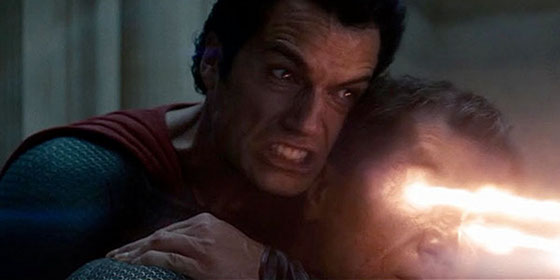 |
Much like its director, Zack Snyder, Man of Steel is one of the most divisive comic book movies ever put to screen. Some fans loved the gritty, grounded approach it took to introducing a new Superman to the masses, while others found it overly serious and lacking any of the fun infused in the ever-popular Marvel Cinematic Universe.
What Man of Steel gave us that past Superman films failed to was the son of Krypton pushed to his mental and physical limits against a superior foe. General Zod served as equal parts thematic threat – due to his ties to Kal-El’s past – and direct physical threat.
Still, the most controversial aspect of the film is no doubt its final act, which sees Superman and Zod tear down half of a populated Metropolis during their final showdown. In the end, Superman is left with a choice: he can spare Zod’s life and ensure the death of a cowering family caught in the general’s heat vision, or he can kill him.
Kal-El snaps Zod’s neck, and while that in and of itself was shocking to an audience who grew up on images of Superman as a clean and pure savior of humanity, the fact that the film tried to shove a moral dilemma down our throats after serving up close to an hour of rampant death and destruction left a sour taste in the mouths of many.
11. Primrose Everdeen (The Hunger Games: Mockingjay)
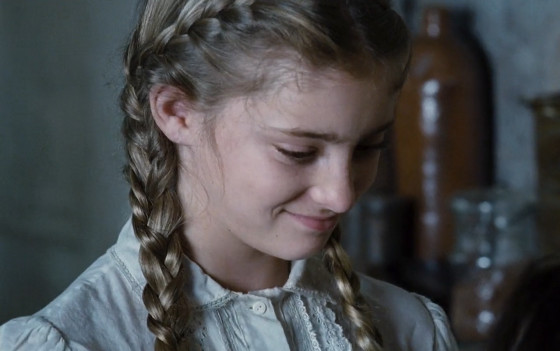 |
The real problem with the death of Primrose Everdeen, the younger sister of lead heroine Katniss, is that book readers wanted to have their cake and eat it too. The extreme negative reaction to her death, which occurs in the final battles in the trilogy, is a result of the strangely clashing worlds of post-apocalyptic fiction and YA Fantasy.
Fans of The Hunger Games want to see their heroes striving to survive in this futuristic hellscape, and they want to see characters die to up the stakes, but when Primrose was killed off in an explosion, they saw it as a cheap plot device injected by the author to garner an emotional reaction.
And they’re right. The death was cheap, but it also makes total sense, narratively. Readers can accept that tributes get killed throughout the story because they’ve entered into a gladiatorial arena; what they cannot accept, however, are the real costs of a violent rebellion that the author is trying to get across.
In fairness, The Hunger Games is not a particularly well-written work of fiction, and the final book is clearly the weak link of the series, but not because of Prim’s supposedly shocking death.
Still, this one brought about some significant fan rage, and that will likely happen all over again when the film adaptation comes out later this year.
10. Jon Snow (A Dance with Dragons)
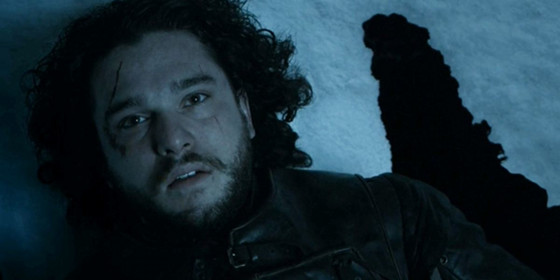 |
Martin’s A Song of Ice and Fire series is a fantastic story, but its true claim to fame is its author’s willingness to kill off major characters at the drop of a hat. When Ned Stark loses his head in Book 1 and Season 1 of the HBO adaptation, we know that this is a story not bound by the traditional molds of the Fantasy genre. When Ned’s son, Robb – along with his wife, Catelyn – dies in the infamous Red Wedding two books later, it serves as a slap in the face, albeit one with purpose.
Where his father and half brother’s deaths served as painful reminders to the audience not to get too attached to any single character, Jon Snow’s (apparent) death in Book 5 felt more like a plain old-fashioned spit in the eye. Where past deaths as witnessed by a massive HBO audience saw social media explode with all manner of shock, sadness and indignation, Snow’s murder at the hands of his own brothers of the Night’s Watch brought fountains of unending nerd rage; to many, the move felt somehow lazy – as if, in avoiding genre tropes for so long, Martin has now found himself at the risk of falling into some of his own making.
9. Haldir (The Two Towers)
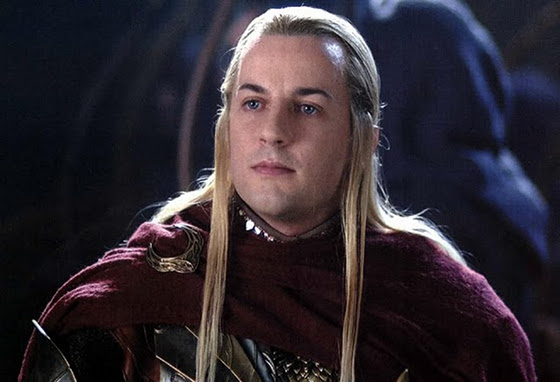 |
Haldir, a noble Elf from The Lord of the Rings, is not a major character in Tolkien’s narrative by any stretch of the imagination. He guides the Fellowship into Lothlórien to await a meeting with Lady Galadriel and then summarily guides them to the shores of the Silverlode so they can be on their way.
Enter Peter Jackson who, after introducing Haldir in the same fashion in the first film in his epic trilogy, decided to bring him back for a glorified death cameo in the second installment.
In The Two Towers, Haldir is sent to Helm’s Deep by Lady Galadriel to assist King Théoden and the people of Rohan in standing against the might of Saruman’s army of Uruk-hai. What follows is certainly one of the greatest battles ever put to screen, and one that still contains one of the most unnecessary and misplaced deaths.
Haldir is cut down atop the wall, the last thing he sees before he dies being the bloodied and mangled bodies of friend and foe before Aragorn lays him down atop the rubble. Essentially, Haldir’s death serves no narrative purpose here other than to provide motivation for Aragorn to be a total badass throughout the rest of the battle – something he was having no trouble with up to that point. It also felt like a cheap attempt to duplicate the emotional toll of Boromir’s death in the first film.
Casual fans didn’t bat an eye, which just made longtime book readers that much more annoyed at the unnecessary change.
8. Data (Star Trek: Nemesis)
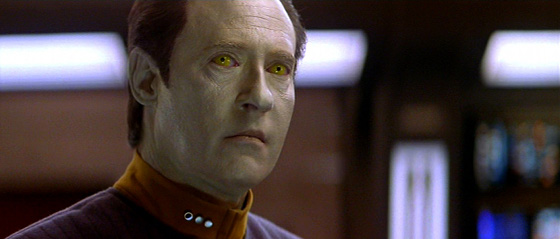 |
Brent Spiner’s Data is undoubtedly one of the most popular characters aboard the USS Enterprise in Star Trek: The Next Generation. A synthetic and self-aware, sentient life form, Data appealed to viewers for years with his unintentional humor, fish out of water sensibilities and his habit of stepping up when the situation demanded it.
Enter one of the most maligned films in the Star Trek canon, Star Trek: Nemesis. This 2002 disaster was a critical and box office disappointment, but its biggest crime was cramming in an unnecessary and ultimately meaningless death scene for Data.
In said scene, Data beams Captain Picard off of the enemy ship and then proceeds to destroy it with himself aboard. The scene plays off as hokey melodrama, complete with an out-of-place wine toast from the surviving crew in Data’s honor.
But what makes this moment truly meaningless is the fact that, before his death, Data managed to sync his memories into B-4, his long-lost synthetic brother, which they show you before the end credits role.
Essentially, Star Trek: Nemesis pulled a move straight out of the Marvel and DC playbook, and it didn’t fit at all with the tone the series had nurtured up to that point. It was unearned and memorable for all the wrong reasons.
7. A Lupin, a Tonks and a Weasley (Harry Potter and the Deathly Hallows)
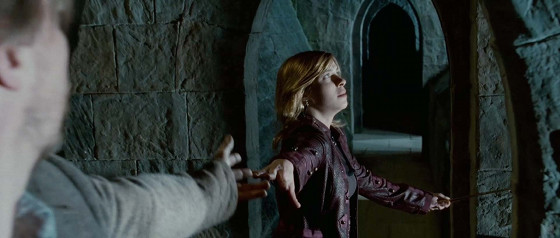 |
It isn’t easy to end an epic Fantasy saga. J.K. Rowling found this out firsthand when she released Harry Potter and the Deathly Hallows, the seventh and final tome in the beloved series, in July of 2007 on the back of insane levels of expectation.
Fans had problems with quite a few things about Rowling’s final volume, but many of the perceived issues with the narrative spun out of the seemingly rushed ending, which culminated in the Battle of Hogwarts.
During said battle, three prominent – if not main – characters perished on the good side, including Professors Remus Lupin and Nymphadora Tonks, a favorite couple among fans, and Fred Weasley, older brother of Ron. In the film version of the novel, these deaths happen off-screen. What’s somewhat shocking is the fact that they happen in the same manner – that is, without description – in the novel, being discovered by Harry and his friends after the fighting has ended.
It made sense to kill a few good guys during the final showdown of an epic battle against a dark lord, but doing so off-camera seemed wrong at the time, and frankly, it still does. To many, it felt like a cheap trick designed to try to prize extra emotion from an enraptured audience who expected major stakes in the inevitable clash between good and evil.
In the end, perhaps Rowling should have stuck with Snape and called it a day.
6. Scott Summers (X-Men: The Last Stand)
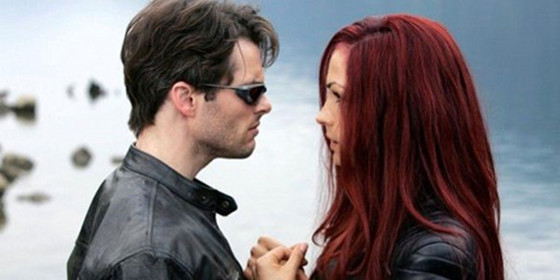 |
To get it out of the way at the top, while Charles Xavier appears to die early into this film – in a weird, uncanny valley-ish nightmare of a scene – he comes back shortly after. Scott Summers, on the other hand, the man who was supposedly Xavier’s prize pupil and the ever-present leader of the X-Men for decades in its comics history, was taken out off-screen after an anticlimactic meeting with a resurrected Jean Grey.
There are so many things wrong with Brett Ratner’s foray into the X-Men film universe that Bryan Singer had to go to great lengths – like, time traveling lengths – to undo the events of The Last Stand when the stellar Days of Future Past came out last year.
For nerds who grew up on the rich X-Men comics, the killing of Cyclops was downright insulting – the final nail in the coffin to a character that still has not been given his proper day in the sun in a film adaptation. The genesis of this poorly-plotted and executed death lies in James Marsden’s filming of Singer’s Superman Returns clashing with The Last Stand, but that’s no excuse for turning him into a glorified red shirt.
Here’s hoping Tye Sheridan gets some better material to work with in the upcoming X-Men movies.
5. Bucky Barnes and Thor (Fear Itself)
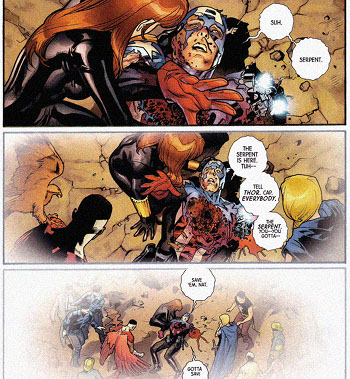 |
In the comic book world, major event tie-ins are the bane of many hardcore fans even as they provide the lifeblood of the publishers. On the backs of (generally) well-received crossovers such as Civil War, Secret Invasion and Siege – okay, not that well received – Marvel really laid a dud when it came to the 2011 storyline Fear Itself.
Fear Itself is a poorly constructed series of crossovers in which the Asgardian god of fear – also known as the Serpent – attempts to seed discord among Earth’s Mightiest Heroes in a bid for the throne.
It makes little sense, but that’s beside the point.
In one of the first major clashes, newly minted Captain America, Bucky Barnes, leads the Avengers against Skadi, one of the Serpent’s Worthy champions, and is apparently killed in somewhat brutal fashion. Of course, as is the way with comics, Bucky comes back almost immediately after being injected with something called the Infinity Formula and then resumes his previous role as the Winter Soldier when Steve Rogers picks up his shield and reassumes the mantle of Cap.
In a later battle, Thor defeats the Serpent, only to die of his injuries. This was a nice callback to Thor’s Nordic roots, but, like the Bucky death, it ultimately meant nothing, as he came back not long after.
Now, these deaths didn’t piss people off because the characters eventually – as in, right away – came back. Rather, it bothered people because it was just a crappy story with false stakes that served no purpose other than to give the shield back to Steve Rogers and send Thor to the realm of the forgotten dead gods.
Most of you probably forgot it even happened, which is condemnation enough.
4. Bruce Wayne (Final Crisis)
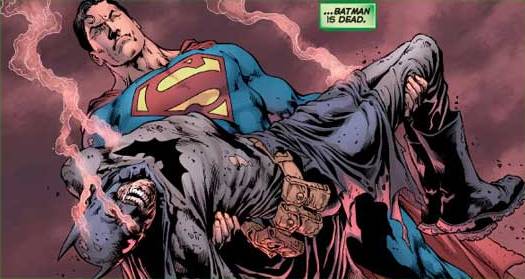 |
Keeping within the realm of convoluted, overly dramatic and damn well-selling crossover events, let’s take a trip over to the 2008 DC Comics storyline Final Crisis, during which Batman is (apparently) killed in a standoff with Darkseid.
Only, he’s totally not killed and instead is sent barreling through the depths of time, where he’s forced to claw his way through the decades and countless physical and emotional dramas before making his way back to the present tense.
In the eyes of many, this storyline, while telegraphed, was actually quite well received, and it propelled Dick Grayson into the cape and cowl for an extended and gratifying run. What left many fans feeling befuddled and a little peeved was the fact that it came directly on the heels of Captain America’s nearly identical death a year earlier at the conclusion of Marvel’s Civil War, time traveling trials, sidekick stepping up and all.
To many, the Batman storyline was handled with more skill and Dick Grayson was a more compelling Batman than Bucky Barnes was as Captain America, but being first counts for a lot.
In this case, the fans seemed to get caught in a bit of big league publishers crossfire, making Bruce’s sacrifice seem cheaper than it should have.
3. The Fetts (Star Wars)
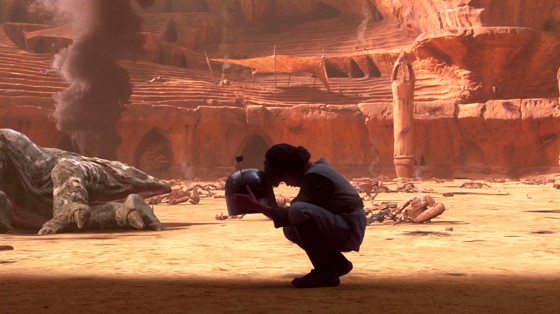 |
If the now mostly-defunct Star Wars Expanded Universe is to be believed, the Fetts were two of the most badass bounty hunters to have ever lived. Boba had a long-standing rivalry with Han Solo, while Jango, well, fathered Boba, making him some sort of implied badass.
Let’s go in chronological order for this one.
During the Battle of Geonosis in Star Wars Episode II: Attack of the Clones, Jango Fett lurks in the shadows during much of the tumult. That is, until Mace Windu sweeps up onto the balcony to challenge Count Dooku. Jango chases the Jedi master down into the arena with a flamethrower, setting the stage for an epic showdown.
And then his jet pack malfunctions, he has his lasers deflected and he is summarily decapitated in front of his young son.
If you thought that was anticlimactic, it seems son did not learn much from father, as Boba Fett has the misfortune of falling into the Sarlacc pit after Han Solo literally accidentally defeats him while arguing with Chewbacca.
Most of the authors and comic writers in the Expanded Universe are huge Star Wars fanboys. Judging by the lengths they went to in order to display the prowess of both of these bounty hunters, it’s safe to say they weren’t thrilled with the way things panned out on screen. Matter of fact, nobody was.
2. Harry Osborn (Spider-Man 3)
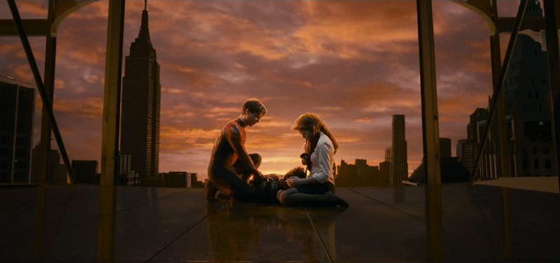 |
Before The Amazing Spider-Man 2 came out last year, fans didn’t think they’d ever live to see the day Peter Parker endured a worse movie adaptation than he did with 2007’s Spider-Man 3. In the eyes of many, he still hasn’t, no matter how hard Sony tried with that last piece of crap.
Spider-Man 3 has loads of problems, but the first third of the movie – excepting all of the useless drama with the Sandman – is actually quite strong. In it, Peter and Harry Osborn are forced to deal with the ramifications of Harry’s rage against the wall-crawler, whom he holds responsible for his father’s death.
If the movie had focused on the relationship between Harry and Peter rather than forcing in an awkward love triangle, one underdeveloped villain and one completely cartoony, garbage version of Venom, it might have turned out incredibly. Instead, we’re treated to one of the campiest comic book movies of all time and then asked to care when Harry nobly sacrifices himself in the final frame to save his former best friend.
The moment is forced and empty, and the audience feels nothing but bitterness and a sense of attempted manipulation before the end credits roll.
Coming on the heels of Spider-Man 1 and 2, this franchise deserved better, and so did James Franco’s Harry Osborn.
1. Pretty Much Everyone (Ultimatum)
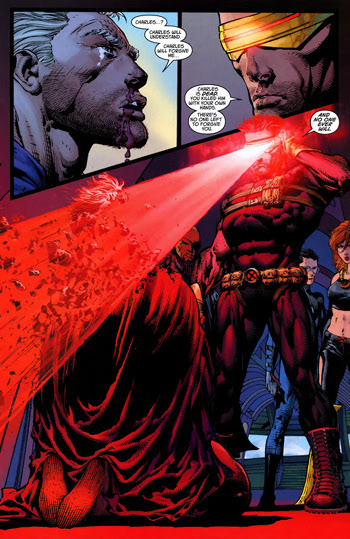 |
Spring cleaning in the comics world can get pretty ugly, and in no place was that more painfully obvious than in the 2009 Marvel Comics storyline Ultimatum, in which pretty much every major character in the Ultimate Marvel imprint was killed – many of them in overtly violent fashion – to prep the deck for an Ultimate Comics reboot a year later.
While never universally loved, the Ultimate Marvel imprint had its far share of diehard fans, most of whom felt completely shafted after this underwhelming and somewhat devastating five-issue miniseries hit. In the saga, which dealt with Magneto’s attempt to destroy the world following the supposed deaths of his children, everyone from Doctor Strange to Spider-Man bit the bullet.
Notable scenes included Cyclops being shot in the head by Quicksilver, Emma Frost being blown up by Madrox and Wolverine being stripped of his adamantium in excruciating fashion at the hands of Magneto.
The story was rushed, extremely dark and did not feel organic in the least, sending the Ultimate Marvel run down the tubes with a bloody shudder.
Previously by Steven Kelliher
“6 DBZisms Dragon Ball Super Should Keep Intact (and 6 They Should Leave on Planet Namek)”
“7 Movie Action Scenes So Badass They Make You Giddy”
“8 Spider-Mannerisms Peter Parker Must Carry Into the Marvel Cinematic Universe”
“The 9 Greatest Years in the Life of Studio Ghibli”
“8 Fantasy Book Series You Should Check out if You Love Game of Thrones”
“The 10 Best Video Game Cinematic Trailers (for Terrible Games) of All Time”
